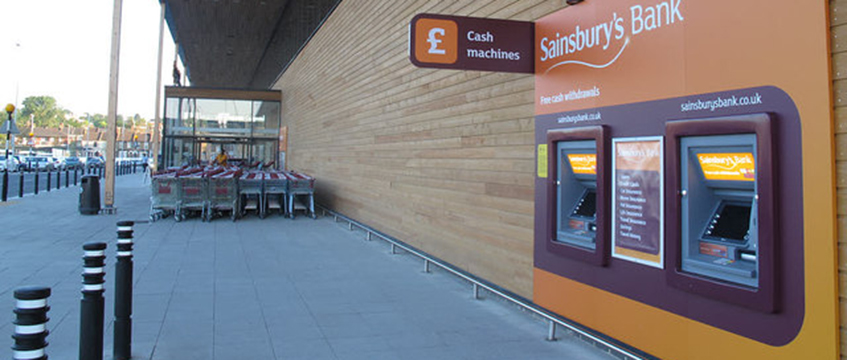Supermarket chains including Tesco and Sainsbury’s will this week learn the outcome of a legal battle over how cash machines in their stores are rated – with more than £300m in rates refunds said to ride on the result.
The Court of Appeal is set to give its hotly anticipated judgment on Friday. But, whatever the outcome, the case is likely to end up being taken to the Supreme Court. This could further delay any refunds, at what is seen as a critical time for cash flow for many supermarkets.
According to Colliers International, outstanding business rates refunds of more than £300m from both the 2010 and 2017 lists have dried up for the big supermarket chains, pending the outcome of the decision over whether automated teller machines (ATMs) located within shop premises should be assessed for separate business rates.
In the decision under challenge, the Upper Tribunal (Lands Chamber) (UT) treated “external facing” cash machines in stores in a different way from internal ATMs – a ruling which, if upheld, affects the treatment of many thousands of ATMs built into supermarket walls across the country.
The Valuation Office Agency (VOA) is claiming that both types of ATM should be assessed separately for additional business rates, which would mean that retailers would have to pay additional sums beyond their normal store rates costs.
Rates liability
Colliers estimates that each ATM site would attract an average rates liability of £4,000, providing yet another financial burden on retailers.
And it says that the delay in resolving this issue has clogged up the appeals system, with tens of millions of pounds of possible refunds for the supermarket chains that cannot be decided until final resolution of this case.
The dispute arose out of action taken in 2014 by the VOA to amend the 2010 rating lists to create separate entries in respect of the sites of ATMs in supermarkets operated by Sainsbury’s, Tesco and the Co-op, as well as in convenience stores and other locations where ATMs are operated by Cardtronics.
Before 2014, the ATM sites in each location had not been distinguished from the host store, and the effect of the decision was to include the ATM site in the list as a separate hereditament with its own rateable value, but without (in most cases) any corresponding reduction in the rateable value of the host store.
In March 2016 the Valuation Tribunal for England dismissed appeals brought by the supermarkets and Cardtronics and determined that the ATM sites concerned were separate hereditaments from the stores, and were in the rateable occupation of the bank or ATM provider – not of the proprietor of the host store. The VTE found that each site should therefore be the subject of a separate entry in the rating list.
Last year, the UT ruled that, while freestanding internal ATMs are not separately rateable, external facing ATMs are.
Clear distinction
Answering the key question: are ATM sites separate hereditaments? deputy chamber president Martin Rodger QC said that a “clear distinction” could be drawn between the space occupied by freestanding machines on the one hand and specific sites that have been designed or adapted for the purpose of an ATM on the other.
Colliers estimates Tesco’s annual business rates liability for 2017/2018 at more than £640m; Sainsbury’s at more than £470m; Asda’s at more than £400m; and Morrisons’ at more than £260m.
John Webber, head of business rates at Colliers, said: “Business rate bills are of course just one extra pressure – but a very significant pressure if supermarket chains are not only paying big rates bills but are also unable to claim the refunds they are due and now very much need. Our clients are asking us to help them save money on their business rate taxes, but it looks like it will be 18 months at least before the ATM issue is solved. In that time, who knows what further difficulties the sector will experience?”
To send feedback, e-mail jess.harrold@egi.co.uk or tweet @estatesgazette








